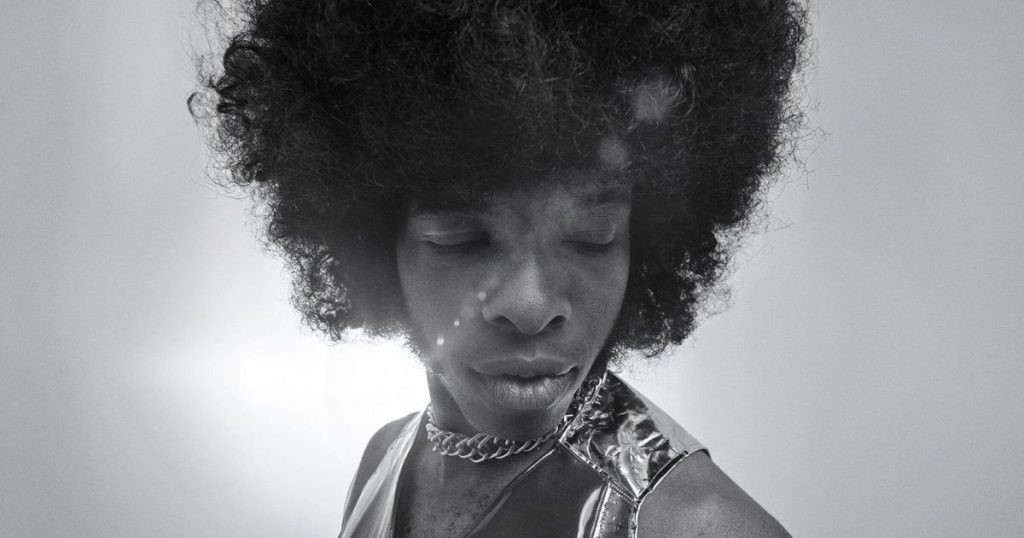Questlove’s documentary Sly Lives! (aka The Burden of Black Genius) is a deeply personal and thought-provoking exploration of the life and legacy of Sly Stone, the enigmatic frontman of Sly and the Family Stone, one of the most influential and groundbreaking bands in rock and roll history. The film, which premiered at the 2024 Sundance Film Festival and is set to stream on Hulu starting February 13, doesn’t just chronicle Stone’s meteoric rise and subsequent struggles but delves into a much broader conversation about the pressures Black artists face in Hollywood and the weight of representing an entire community. By weaving together interviews with Stone himself, as well as reflections from other iconic figures like André 3000, Chaka Khan, D’Angelo, and George Clinton, Questlove paints a nuanced portrait of the burdens of Black genius—both the triumphs and the costs.
At the heart of Sly Lives! is a haunting question: Did Sly Stone’s struggles with addiction and his withdrawal from the spotlight stem from the external pressures he felt to represent the Black community in a way that was palatable to white audiences? Questlove doesn’t provide a definitive answer, but his exploration of the topic is masterful. Through a wealth of archival footage, live performances, and candid interviews, we see a Sly Stone who is confident, charismatic, and unapologetically himself. In one particularly striking moment, Stone recalls being approached by members of the Black Panthers, who wanted him to support their cause. His response? “I ain’t got no problem being Black in the first place.” This bravado could easily be interpreted as a shield, hiding deeper insecurities, but Questlove leaves it up to the audience to decide. Stone’s own words and actions suggest a man who was unbothered by the expectations of others, but the broader cultural context makes it impossible to ignore the tension between his personal pride and the weight of representation.
Questlove doesn’t shy away from the complexities of Black fame, and the film is at its most compelling when it extrapolates Stone’s story to explore the universal struggles of Black artists in the public eye. The documentary opens and closes with a montage of Black stars—Prince, Nina Simone, Whitney Houston, Lauryn Hill, and Donna Summer—whose careers were marked by both brilliance and public unraveling. These images are juxtaposed with footage of Will Smith’s infamous Oscars slap in 2022, an event that sparked debates about Black masculinity, celebrity accountability, and the limits of vulnerability in the public sphere. For Questlove, these moments are all part of the same conversation: What does it mean to be a Black artist in a world that demands so much of you, while simultaneously dehumanizing you?
One of the most striking aspects of Sly Lives! is its use of interviews with contemporary artists to flesh out the emotional and psychological toll of fame on Black creatives. Chaka Khan, for example, reflects on her own struggles with substance abuse and the pressure to fit into narrow musical and racial categories. “When are we ever going to be allowed to be vulnerable, to be human?” she asks, a question that resonates deeply throughout the film. Her words echo those of D’Angelo, who speaks candidly about the suffocating expectations placed on Black celebrities. “If you don’t know how to handle it, if you don’t have your soul centered,” he says, “it can be unbearable, man. It can turn you into an unwilling participant. And that’s equivalent to hell.” These testimonies don’t just humanize Stone; they reveal a shared experience of Black artists navigating the impossible expectations of fame.
Questlove’s approach to the documentary is refreshingly unorthodox. Rather than presenting a linear, chronological account of Stone’s life, he uses Stone’s story as a lens through which to examine the broader cultural forces that shape the lives of Black artists. This isn’t a traditional tribute; it’s a deeply personal and philosophical meditation on the interplay between creativity, identity, and the burdens of representation. At times, the film feels more like a conversation with Questlove himself, a man who has spent his career grappling with these same questions. His inclusion of interviews with artists like André 3000, who recently faced backlash for his experimental flute album New Blue Sun, underscores the timelessness of these struggles. Even today, Black artists who defy expectations are often met with confusion, criticism, or even outright hostility.
Ultimately, Sly Lives! is less about Sly Stone than it is about the larger cultural landscape that shaped his life and career. While the documentary raises important questions about whether Stone’s personal struggles were a direct result of the pressures he faced, it also challenges its audience to think more deeply about the ways in which we consume and judge Black artists. Questlove’s film is a call to action, urging us to create space for Black vulnerability and to recognize the humanity behind the genius. As we watch, it’s impossible not to think about Lauryn Hill’s breakdown during her 2001 MTV Unplugged performance, or Whitney Houston’s tragic decline, or even Will Smith’s Oscars moment—all of these events are a reminder of the fragility of Black fame and the need for empathy and understanding. By inviting us to grapple with these complexities, Sly Lives! offers a powerful and necessary contribution to the ongoing conversation about Black art and identity.
